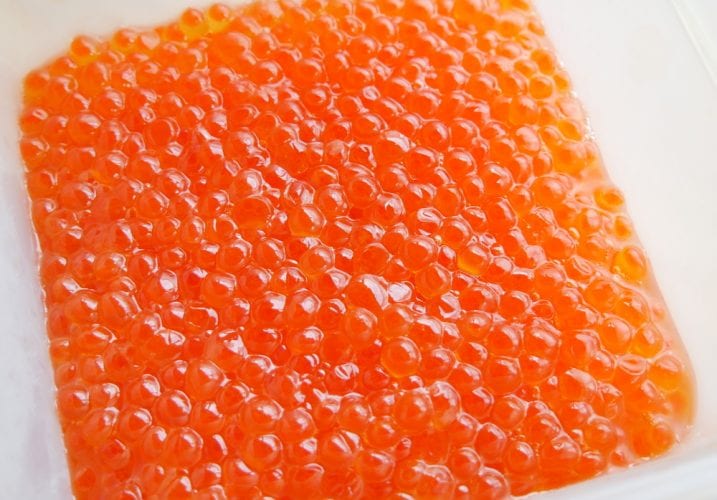
Hatchery chum salmon returns in Southeast Alaska so far this summer have been much weaker than expected throughout the panhandle. There are signs that some of these fish may be late to show up but hatchery managers don’t expect to meet their forecasts.
The early numbers are not good. Going into the season the forecast was for a region-wide harvest of 18 million chums, with most of those produced in hatcheries around Southeast. Through the first week in July, the total catch was just 79,000 fish, down 95 percent from the same time last year.
“The forecasts at least viewed from this point in time look highly inflated to what we’re seeing on the grounds,” said Steve Reifenstuhl, general manager of the Northern Southeast Regional Aquaculture Association or NSRAA, headquartered in Sitka.
“And that’s true from Ketchikan to Juneau to Sitka,” he said. “So far the season is disappointing. Chum do not seem to be coming in in the strength we expected. The only maybe modest exception to that is Southeast Cove near Kake where we’re five times ahead of our harvest that we saw last year in 2018.”
Even that site is tracking to end up only half of its 1.7 million fish forecast. And it may remain only open to cost recovery fishing and not to the bulk of the fleet. Reifenstuhl calls chum returns to Deep Inlet, near Sitka, very disappointing. NSRAA’s Hidden Falls hatchery on Baranof Island has had four purse seine openings with very few fish harvested. That site isn’t expected to reopen to the purse seine fleet until enough fish are recovered for brood stock, or the next generation. There’s been no reported harvest at NSRAA’s new release site in Thomas Bay near Petersburg, although that was only forecast to be a small return of 10,000 fish.
Reifenstuhl said it’s too soon to write off the season, pointing to indications of chum off shore and some better numbers showing up in test fisheries, intercepted on their way into the inside waters.
Further to the south, the story is the same.
“We are still hopeful at this point that the fish are late rather than missing and we are seeing an uptick in the fisheries that we watch before the returns arrive at the terminal areas,” said David Landis, general manager of the Southern Southeast Regional Aquaculture Association, or SSRAA, headquartered in Ketchikan.
Landis is hopeful that some of the incoming fish being caught near the southern end of Prince of Wales Island are returning to SSRAA’s release sites at Burnett Inlet or Neets Bay.
Chum return in multiple year classes of different aged fish. Last year Southeast’s hatcheries saw a bumper crop of the youngest returning spawners. Landis explained so far those big numbers have not carried over to 2019.
“We had an odd year last year with our three-year-old chum salmon where there were a lot more than we expected,” he said. “And higher percentage of male chums on the three year olds. So that would indicate to us that the four-year-old fish this year would be similarly well represented as far as numbers go and so far we’re not seeing that in the amount that we would have expected.”
Further north, around Juneau and Lynn Canal, Douglas Island Pink and Chum reports gillnet catch numbers are well below forecast. The seine fleet hasn’t had an opening for Almaga Harbor chums by mid July and may not until that organization sees better returns.
“Something’s going to have to have to dramatically change for me to do that,” said Eric Prestegard, executive director of that hatchery organization based in Juneau. “Hopefully now as we’re starting to see a weather change, with the clouding over, hopefully cooler temperatures and hopefully some rain, maybe things will change.”
Prestegard thinks the hot dry weather during what should be the peak of the summer run is playing a part in the weak returns. He says DIPAC’s actual returns are 20 percent of what he’d like to see at this time in the summer and he doesn’t expect to hit the pre-season forecast.
“We forecasted a total return of four point four million,” Prestegard said. “At this point I’d have to say I’d be pretty darn happy with two million.”
DIPAC will continue with cost recovery fishing to help pay for operations. Prestegard thinks his organization will be able to meet goals for brood stock. Like the others he’s hopeful the middle of July brings stronger numbers a week or two past the normal peak.
The low numbers could carry over to later in the season too. Some of the region’s hatcheries have different runs of dog salmon – with summer runs in June and July and others and fall fish returning later. Last year a big return of NSRAA’s fall fish at Crawfish Inlet south of Sitka made the season for some fishermen in September. But NSRAA’s Reifenstuhl isn’t hopeful for a repeat based on what he’s seen so far.
“Given what we’re seeing so far with the summer run, I guess I would expect similar things with the fall run that we’re just not going to see as many four year olds as forecast,” Reifenstuhl said.
Meanwhile the news isn’t much better on pink salmon yet, although it’s still early. Fish and Game forecast an 18 million fish harvest for that species too. But the catch total by the first week in July had only topped 38,000 fish, down 94 percent from the catch last year at this time. And some test fishing is showing weaker than normal pink salmon returns.










